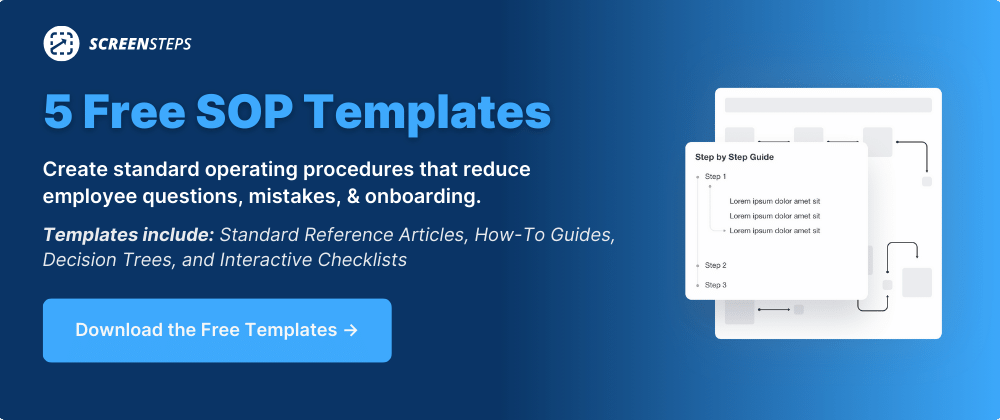Standard Operating Procedures: What is The Purpose + Types of SOPs
When most people think about a standard operating procedure, they think about a very formal document that looks something like this.
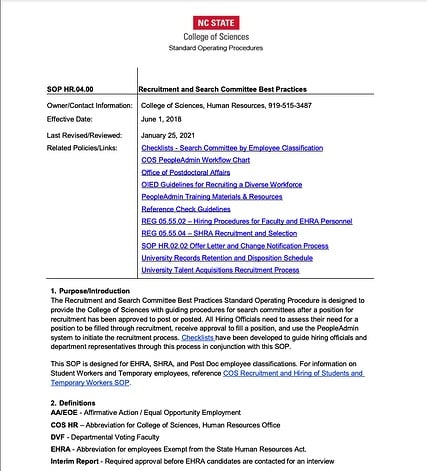
Typically, these technical-looking documents include a lot of tables and legalese. They are crowded with text and information, which makes it difficult for end-users to read.
But standard operating procedures (SOPs) don’t have to look that way. In fact, the people using your SOPs will thank you if you can make them easier to read and follow as they perform the actual procedure.
Working as the Head Consultant for ScreenSteps — a knowledge ops solution — I’ve coached customers on how to make complex procedures easy for employees to use while in the workflow.
There are many different SOP document types that simplify writing procedures. In this blog post, I’ll first explain the purpose of an SOP. Then we’ll dive into examples of those types of articles you can use to write your SOPs.
DOWNLOAD FREE SOP TEMPLATES
If you're new to writing SOPs, use these free SOP resources to get started:
- SOP Templates – Includes 5 free templates with examples.
- Digital Guide Checklist – A checklist to make sure you include important information in your SOPs.
What is the purpose of an SOP?
The purpose of an SOP is to help somebody do a task correctly. Sometimes companies fall into the trap of listing out everything employees could need to know in their SOPs. Then they set them aside and no one ever looks at them again.
The purpose of an SOP is NOT to include as much information as possible. If you look at the Wikipedia definition, it states that SOPs are “meant to help workers carry out routine operations.”
So think about SOPs in that way: What can you provide to employees that will help them carry out a routine operation?
That means avoiding getting too technical or detailed.
As you prepare your SOPs, focus on the following:
- Who is using your SOPs?
- What do you need to provide them so they can use this SOP correctly?
If you keep returning to this question as you write your SOPs, you will have procedures that help your employees correctly perform their assignments.
4 types of SOP documents (with examples)
There are many different ways to write your SOPs. Each layout helps to communicate instructions quickly and provides just the right amount of information in the guide. Here are four types of articles types:
1. Checklists
Checklists are a high-level overview of everything that needs to be done in a process.
A checklist is organized in bulleted lists. You don’t use full sentences on checklists. The goal is to get the point across in as few words as possible.
Typically, checklists are used when an employee knows how to perform the detailed steps of a procedure. They just need prompts so they don't forget anything.
In other words, they don’t need step-by-step instructions on how to move through a process. Employees using a checklist can recognize a quick phrase, identify what needs to be done, and do it.
SOP example 1 of a checklist
For airline pilots, a checklist that looks like this is sufficient for dozens of operations.
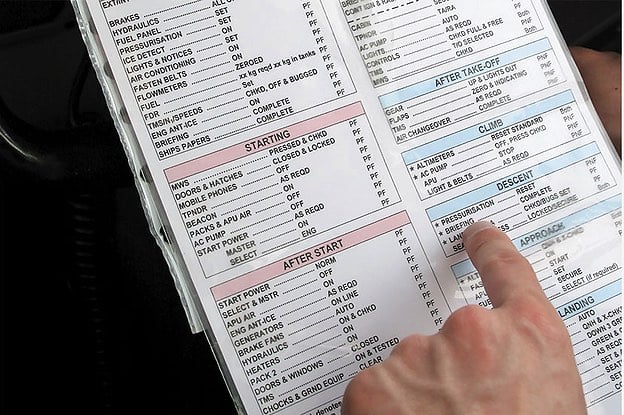
Note: The checklist doesn’t include instructions on how to toggle the switch or where it’s located. However, the checklist takes into consideration what the pilots already know and what they’ve been trained on.
Important: You can have different levels of detail in separate SOPs. If pilots aren’t sure how to set the fuel panel, then they could refer to additional step-by-step instructions in a separate SOP.
SOP example 2 of a checklist
For surgeons, an SOP might look like this:
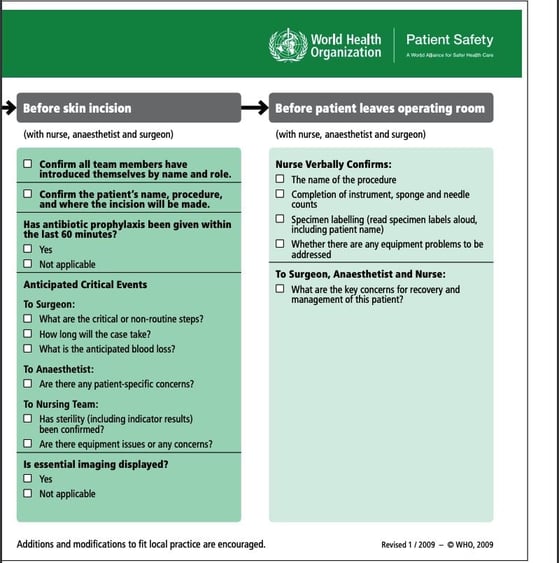
Again, this SOP takes into consideration that the medical professionals have received training on how to give the antibiotic, prophylaxis. It helps them review the overall procedure without going into intricate details.
After all, you probably don’t want a doctor who doesn’t know what they are doing, but even doctors forget things. It helps to know they double-check to make sure they don’t miss an essential step in preparing for surgery.
Best Practice Tip
SOPs are not the same thing as training documentation. SOPs can be used during training (and should be), but don’t need to include all of the background information that is usually included in training materials.
Company SOPs need to make assumptions around how much the person following them has been trained. An SOP for doing a procedure in the CRM shouldn’t include details about what a CRM is and why it’s important. That information goes in your foundational courses in your employee training curriculum.
2. Step-by-step instructions (standard articles)
An SOP can include straightforward, step-by-step instructions. These SOPs walk your employees through each step of a procedure, prompting them on what to do next.
Besides written instructions, step-by-step instructions often include screenshots and images to show employees how to perform a task. These step-by-step guides are often considered standard articles for SOPs.
Example of a step-by-step SOP
Having step-by-step procedures is particularly helpful when performing tasks on a computer.
For example, the scenario below is teaching an employee how to clone a manual. It explains the order an employee needs to perform the procedure in as well as shows where to click on the page.
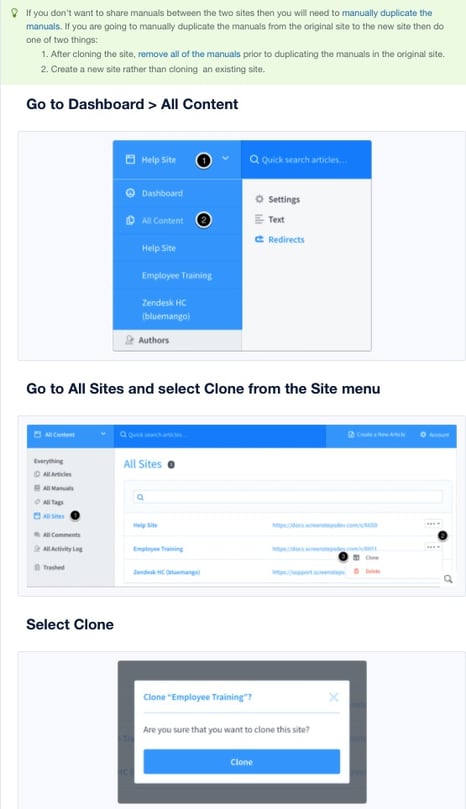
Note the lack of text explanation in this example. If the image conveys what needs to be done, then you don’t need paragraphs of text saying the same thing.
3. Decision trees
When it comes to complex SOPs that have multiple variables, you’ll want written procedures that can react to the different scenarios.
With decision trees, the SOP provides a path for your employees to follow depending on what the situation calls for. These decision trees can be presented in multiple ways, including a flowchart or a bulleted Word document.
Example of a flowchart SOP
This flowchart example of a decision tree gives a point of reference where employees should start. Then it provides a bunch of yes-no questions.
As an employee answers each question, they let their answer lead them to the next question until they’ve reached the final answer. Aka: Can the employee process a refund?
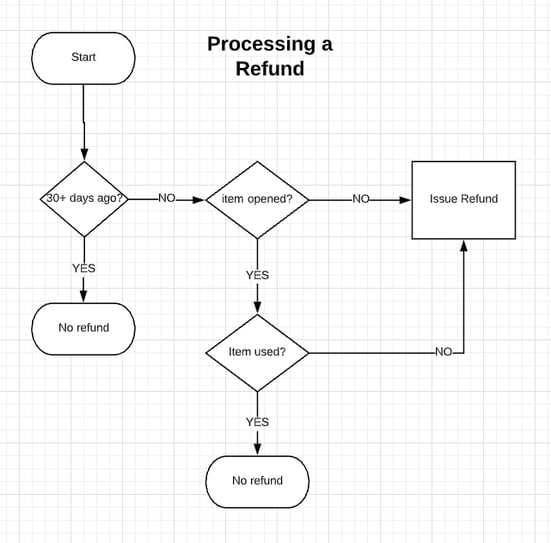
SOP example of a decision tree in a Word document
Sometimes, all an SOP needs to be is a bulleted list of what to do. In a Word or Google Doc, you are still walking employees through a procedure using decisions. However, in this situation, employees need to scroll to the appropriate next question.
Include visual cues in your Word decision trees. For example, note how the example below uses sub-bullets and color to make it clear where decisions need to be made. Then it makes the SOP more skimmable as the employees scroll to the next step.
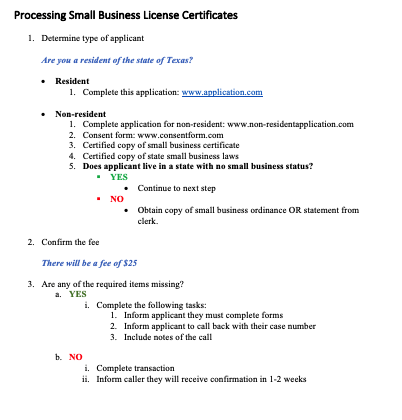
Bottom line — focus on helping the READER do the procedure. Whatever format works best for them, NOT YOU, is the format that should be used.
4. Workflow articles
Admittedly, workflow articles are similar to decision trees. Workflow articles combine the decision-making process of decision trees with the convenience of step-by-step instructions.
They require a knowledge base or another interactive cloud-based application so that employees can click through the procedure. Workflow articles handle complex SOPs.
Some procedures may not be straightforward. In those situations, you might need an SOP that addresses variables. In those cases, including buttons that allow the reader to choose their own adventure would be most appropriate.
SOP example of a workflow article
In this workflow article example, you see the first step in an SOP. Workflow articles use questions to move an employee through the process.
Here the first question is, “What do you want to set up Single Sign-on with?” Depending on how the employee answers, the application will pull up the appropriate next question (or step) in the procedure.
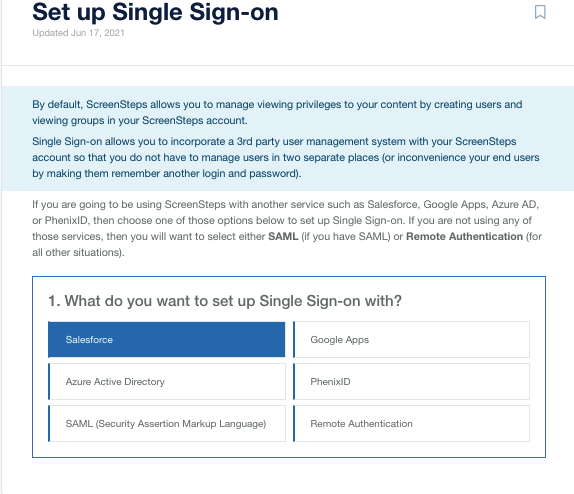
One more tip — never use a video for an SOP
Before you go, I have one last tip for you when it comes to creating SOPs. You'll see a lot of resources recommending creating videos for your SOPs.
While video serves a purpose in training employees, never create an SOP in video format.
Why? SOPs are meant to support employees while they are in the workflow. That means they don't have time to stop and watch a video — especially if they are a customer-facing employee.
Also, videos take a lot of time to create. Your SOPs will frequently have minor changes (i.e. changes to dates, adding a step, etc.). You need to be able to update your SOPs in minutes. With a video, edits take hours.
As a result, your employees end up working with inaccurate information, so they make mistakes.
Create independent and confident employees with clear SOPs
Before you write your SOPs, it helps to know what article type will best explain the steps your employees need to follow. Different article types make it easier for your employees to read and follow your guides.
However, not all documenting applications have the same capabilities.
For creating SOPs and storing your SOPs, it is helpful to have a cloud-based knowledge base. Each knowledge base software company offers different content creation tools. Some even have templates for different article types.
With ScreenSteps, we have three different types of articles: standard articles, checklists, and workflow articles. In addition, the ScreenSteps knowledge base software has a robust collection of content creation tools that are easy to use and even more impactful for the reader.
Ultimately, the goal is to have findable, followable, and scannable SOPs that help your employees work independently without making mistakes.
Download this free SOP template packet. The packet includes 5 free SOP templates for the different types of SOPs mentioned in this article.



.png)

